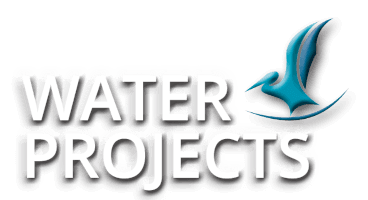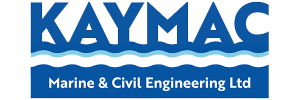Severn Estuary Long Sea Outfall Replacement (2025)
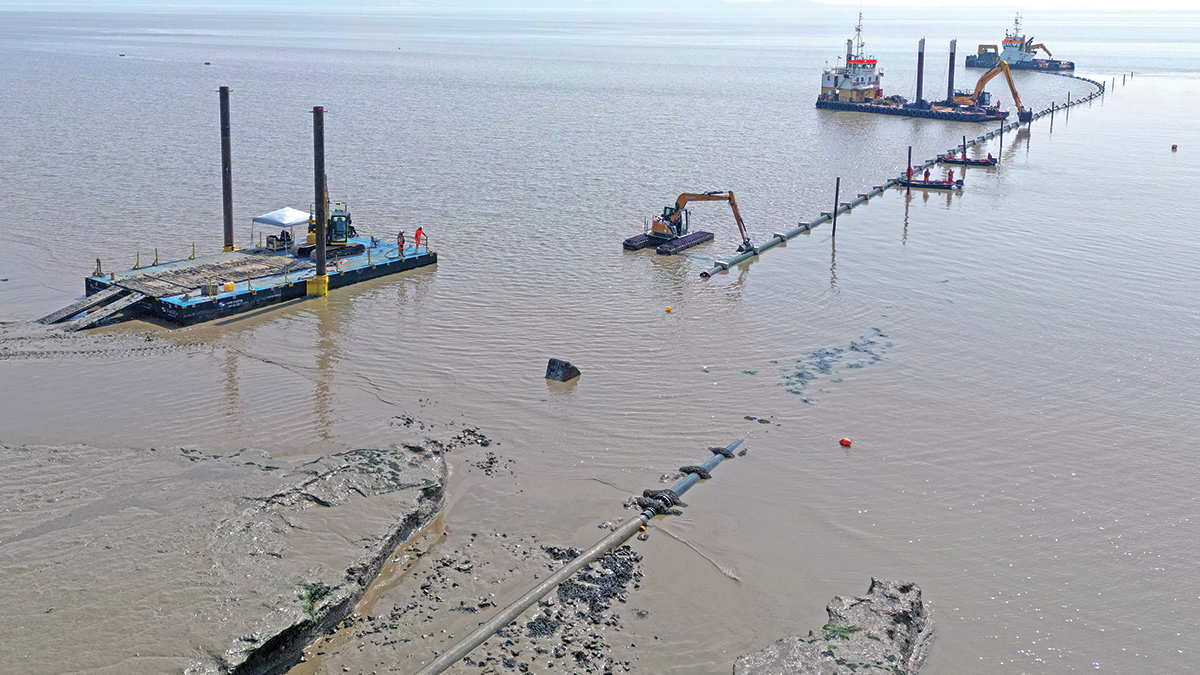
First section of pipe being positioned ahead of sinking into the pre-excavated trench - Courtesy of Kaymac Marine & Civil Engineering Ltd
The Severn Estuary is renowned for its tidal range of 12-14 meters, the second largest in the world, and as such poses significant challenges for civil and marine works. In late 2024, a critical infrastructure upgrade project was completed near Nash, Newport, replacing a long sea outfall pipeline originally constructed in 1960 to extend its operational life. The project involved installing a 1.4km 560mmØ high-density polyethylene (HDPE) outfall pipe to replace the deteriorated concrete-coated steel pipe. Situated within one of the UK’s most ecologically sensitive regions and a Site of Special Scientific Interest (SSSI) in the Severn Estuary, the project not only secured infrastructure integrity but also adhered to stringent environmental protection measures.
Project challenges and environmental safeguards
Kaymac Marine & Civil Engineering Ltd was appointed as the principal designer and contractor for the £8.4m outfall replacement project.
The Severn Estuary is designated as a Site of Special Scientific Interest (SSSI), which protects its tidal flats, salt marshes, and diverse wildlife, which required the project team to introduce and adhere to comprehensive environmental safeguards.
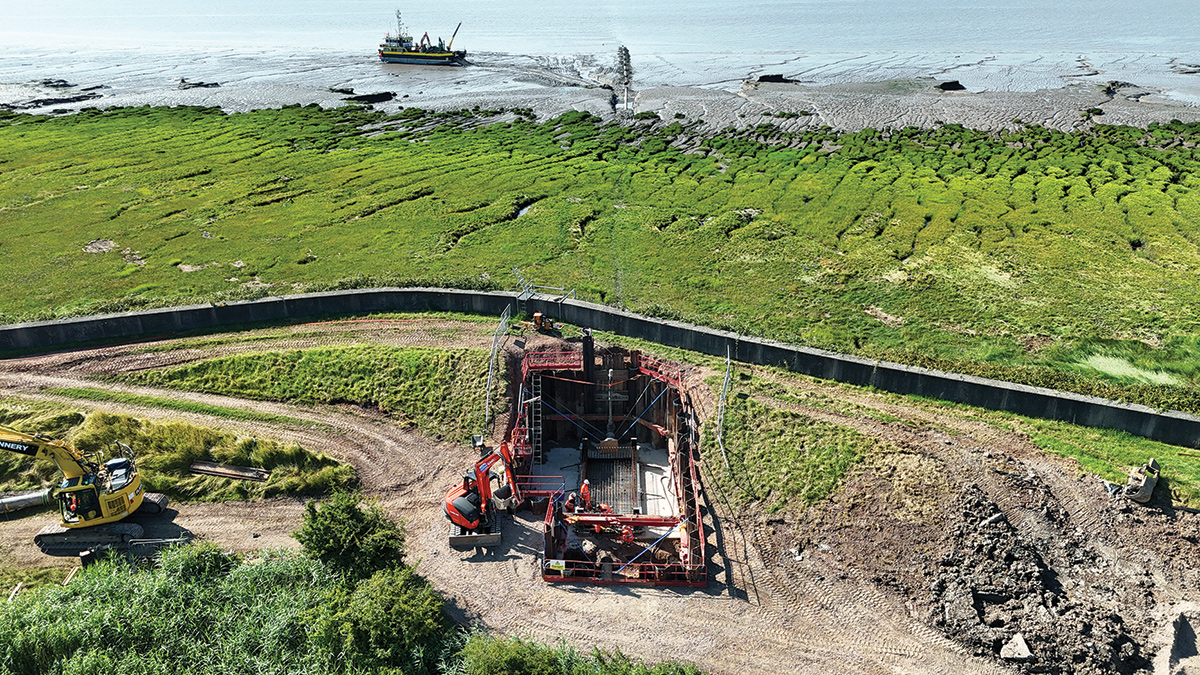
The in-land RC chamber connecting the new and existing pipe (during construction) – Courtesy of Kaymac Marine & Civil Engineering Ltd
Sediment control measures such as careful selection of plant and equipment, implemented in collaboration with National Resources Wales (NRW), minimised water quality impacts during the excavation and pipe-laying activities.
Kaymac Marine & Civil Engineering Ltd drew upon its deep industry expertise and practical experience to drive the design direction and successfully secure all necessary permits and permissions for the project. Working closely with the local council and NRW, Kaymac led the process of obtaining the required Marine License, Environmental Permits, and Planning Permissions, ensuring full compliance with all regulatory requirements.
Through comprehensive site investigations and advanced geophysical and bathymetric surveys, Kaymac Marine & Civil Engineering Ltd identified critical site-specific characteristics that directly influenced the project’s design. This informed approach allowed the team to craft tailored solutions that addressed regulatory concerns while optimising project outcomes.
Kaymac’s practical experience played a crucial role in addressing the expectations of the environmental regulators. By proactively collaborating with NRW and other stakeholders, the team was able to satisfy stringent environmental requirements, demonstrating how the proposed designs minimised ecological impacts while maintaining structural and operational integrity.
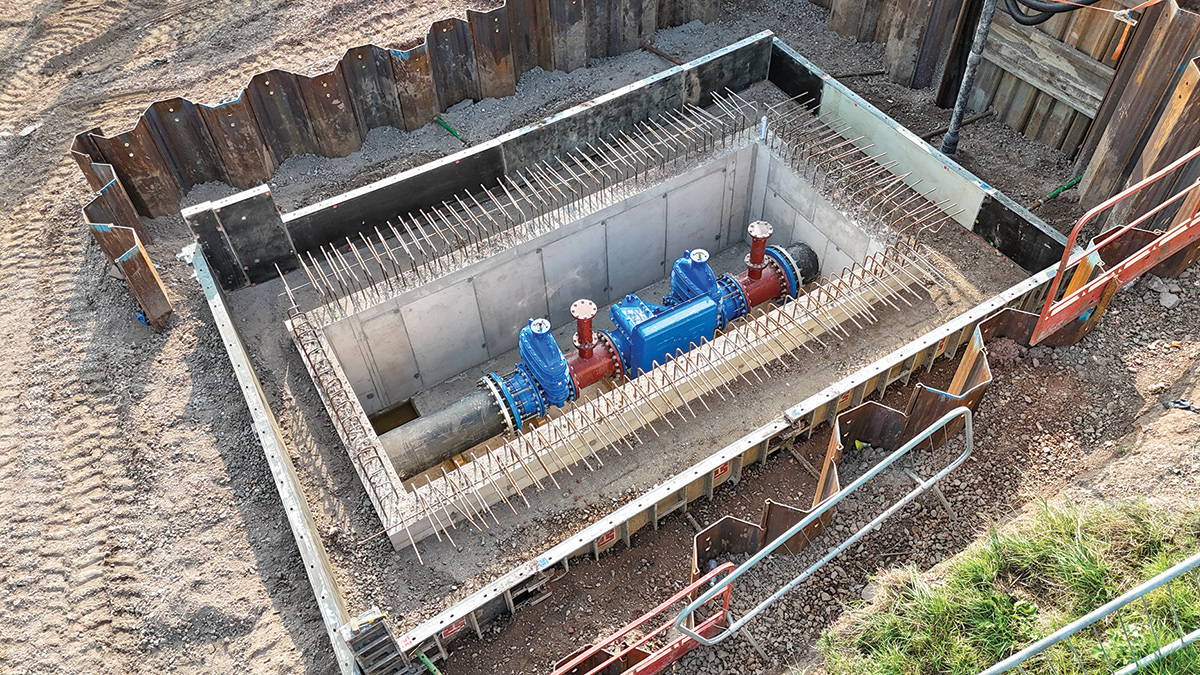
New valves within the inland chamber – Courtesy of Kaymac Marine & Civil Engineering Ltd
This expertise and experience, coupled with a solutions-focused mindset, not only streamlined the approval process but also ensured that the final design adhered to both regulatory standards and the project’s overarching goals.
To maintain quality standards and to ensure the works could be undertaken within the licencing timeframes, Kaymac Marine & Civil Engineering Ltd engaged suppliers early on, securing essential equipment and materials; whilst conducting regular necessary quality visits and inspections to ensure technical and Quality compliance.
Severn Estuary LSO Replacement: Supply chain – key participants
- Principal Designer & Contractor: Kaymac Marine & Civil Engineering Ltd
- Designer: Pebble Engineering Ltd
- Specialist design: Morek Engineering Ltd
- Specialist design: H2NA Ltd
- HDPE pipe: Pipelife Norge AS
- Precast concrete collars: Poundfield Precast
- Precast concrete mattresses: Subsea Protection Systems
- Duckbill check valves: Measurit Technologies
- Valves: Scott Parnell
- Landside temporary works & shoring
- MGF Ltd
- Huennebeck
- Construction materials
- Scott Parnell
- Neal Soils
- Wright Readymix
- Stone Supplies
- IPP
- Floating plant
- Jenkins Marine
- Kraken Marine Services
- P&D Environmental
- Construction plant hire
- Land & Water Plant Hire
- Flannery Plant
- Weldex
- RW Christopher Crane Hire Ltd
- United Rentals
- Atlas Winch & Hoist Services Ltd
- A1 Surveys
- MTK Breakers
- LGS
- Gap Hire
- Services
- HV Fusion
- Severn Environmental Services
- ABP Newport & Barry
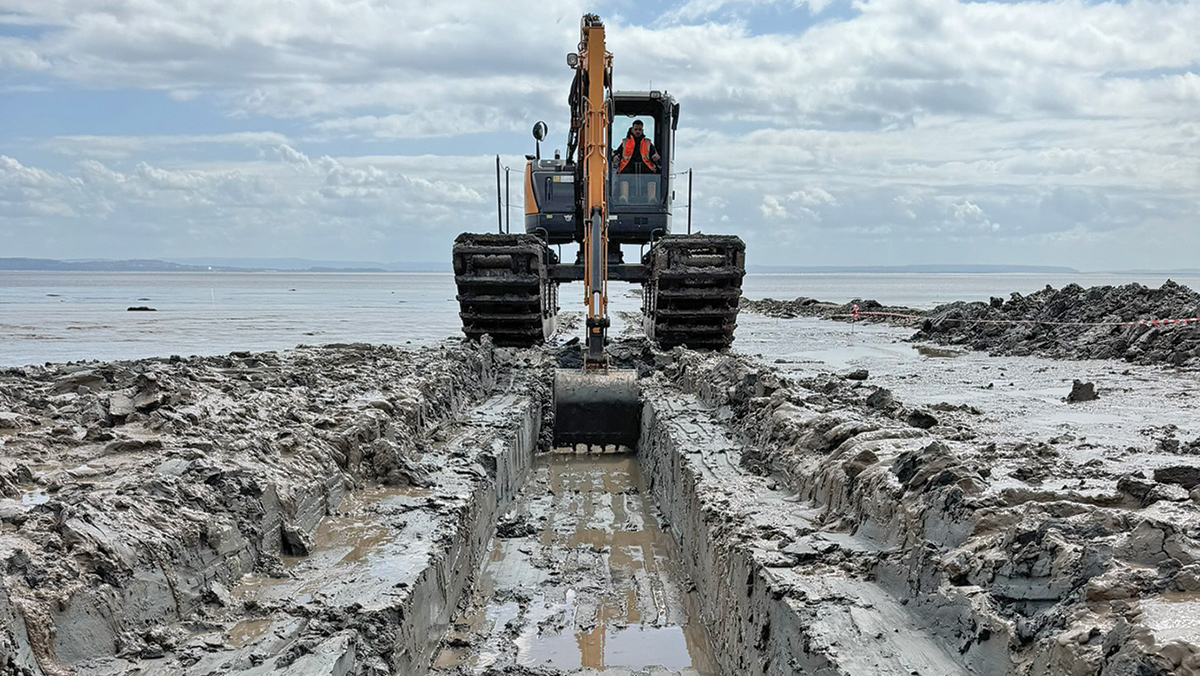
Trench excavation prior to the first section of pipe installation – Courtesy of Kaymac Marine & Civil Engineering Ltd
Detailed design & planning
A comprehensive understanding of the physical forces that dominate the ocean environment, their origins, and the likelihood and intensity of these forces over the lifespan of an outfall is critical to its effective design, regardless of the construction materials used.
These forces can compromise the outfall’s integrity either directly or indirectly, such as through seabed erosion or by destabilising its foundation. Additionally, sediment transport can obstruct diffuser orifices, potentially leading to system failure. These factors were considered and mitigated during the planning and design phases to ensure the long-term functionality for this particular environment.
Kaymac Marine & Civil Engineering Ltd appointed Pebble Engineering Ltd as designers and worked collaboratively to develop the construction methods and subsequently the detailed design of the outfall.
Both the construction method and the detailed design needed to align and complement each other, with regard to compliance of the aforementioned environmental and planning regulations, the seabed conditions present on site and the anticipated physical conditions (such as sea, wind, wave, tidal and current) of the works location.
Delivery & preparation of HDPE pipe
The new high-density polyethylene (HDPE) long sea outfall pipe, measuring 1.4km in length and 560mm in diameter, was manufactured by Pipelife Norge AS in Norway and was towed 1,134 nautical miles to Newport in 11 sections under a single trip.
Upon arrival at ABP Newport Docks, each pipe section was stringently inspected, tested and then later prepared for installation.
The preparation works involved the installation of over 260 bespoke precast concrete ballast collars that were designed to ensure stability of the pipeline against the hydrodynamic forces of the watercourse and the natural buoyancy of the HDPE material, once it had been sunk to its installed position within the trench.
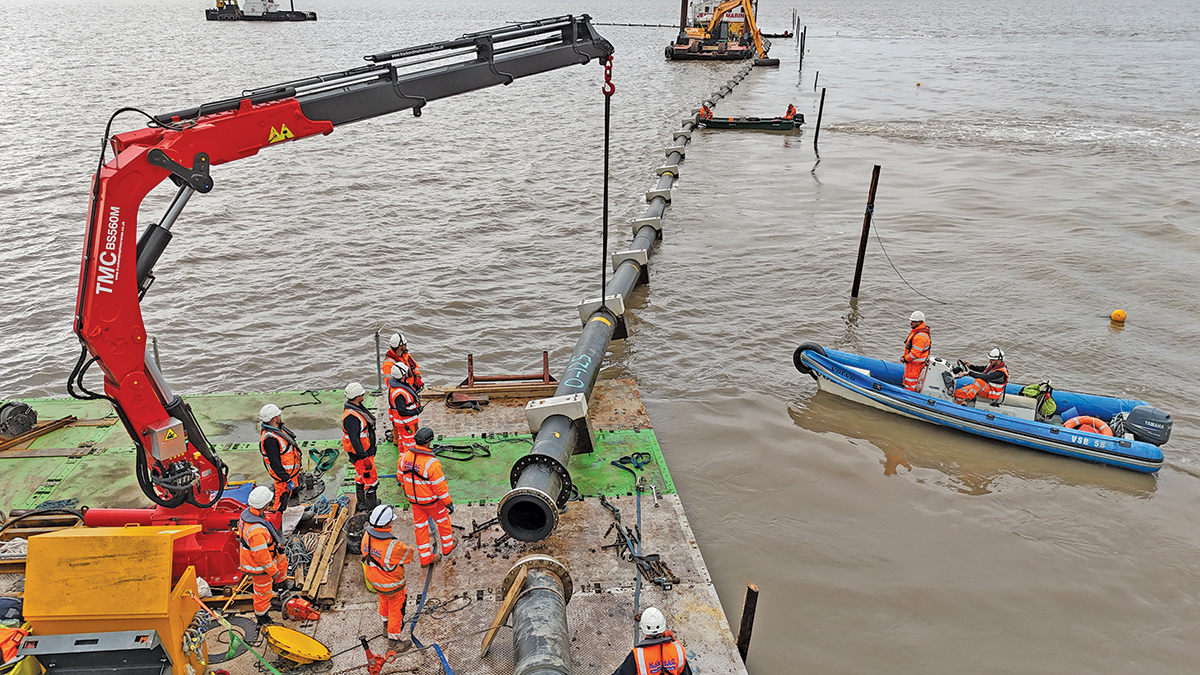
Pipe being prepared for connection – Courtesy of Kaymac Marine & Civil Engineering Ltd
Innovative installation techniques in a tidal environment
The use of specialised low pressure bearing amphibious excavators handled intertidal trenching at low tide, while a GPS-equipped dredging vessel undertook the offshore trenching requirements. The installation spanned an approximate 28-day period, working shift patterns under challenging tidal conditions, with trenches reaching depths of approximately 1.5–2 meters.
A key milestone involved towing the first 250 meter section of the pipe from ABP Newport, navigating the currents and flows of the Severn Estuary, to the installation site, approximately three nautical miles away. This segment, equipped with 50 concrete collars, was positioned over the trench as the tide receded, sunk under the guidance of divers from Kaymac Marine & Civil Engineering Ltd to ensure accuracy, before being backfilled with the previously excavated spoil.
Finally, the precast articulated concrete mattresses from Subsea Protection Systems Ltd were installed by utilising a crane barge to provide additional scour protection and stability to the outfall. Such mattresses have been used successfully for decades to protect oil and gas pipelines and since the early 1990s, they have been increasingly used to protect ocean outfalls.
Throughout the project, Kaymac employed a flotation and submersion technique whereby each 250 meter long section was towed into position and the seaward end of the previously installed pipe length was recovered to the working platform, before connecting to the new length and then sinking within the new pre-excavated trench.
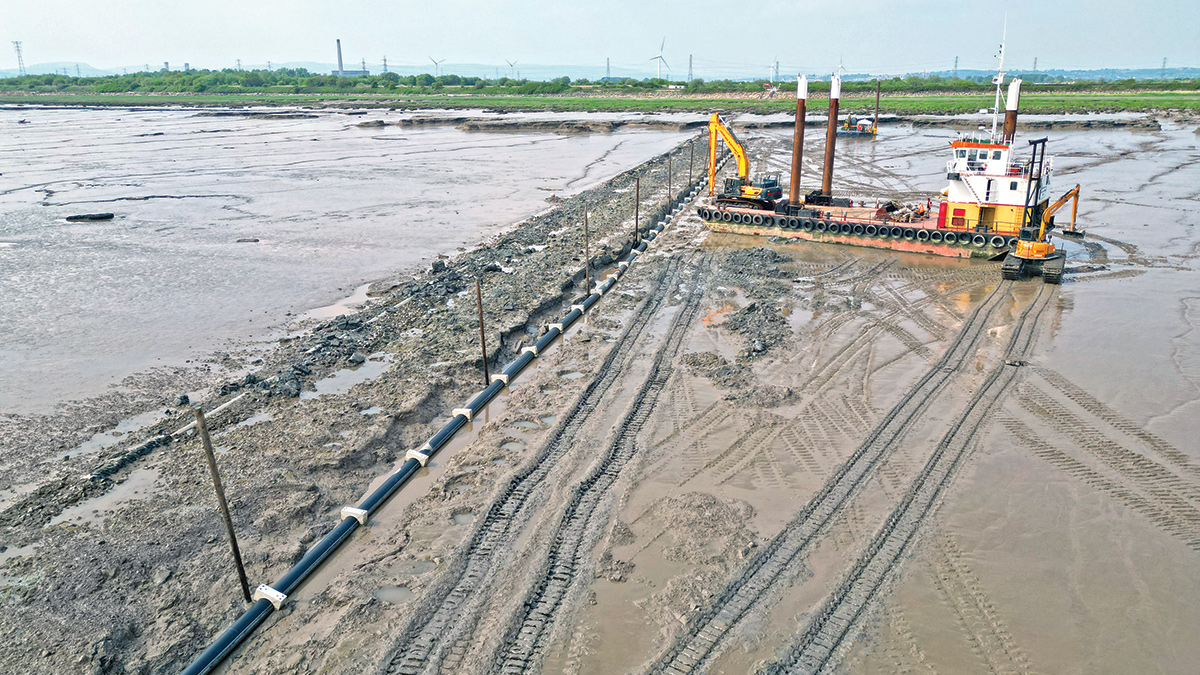
First section of the pipe within the trench during low tide ahead of backfilling – Courtesy of Kaymac Marine & Civil Engineering Ltd
Ensuring an accurate and safe sinking procedure in the Severn Estuary required considerable planning efforts from the delivery team, taking into consideration tidal movements and slack water periods. Each sinking activity was planned meticulously to ensure that a constant submersion rate could be implemented, assisted by a number of key specialist vessels being present to position and secure the pipe section in place whilst the slack water period approached.
Slack water periods in this location are relatively short and as such, the rate of pipe submersion needed to be planned and controlled by adjusting both the water inflow and air release rates. To avoid a bending radius that could become smaller than its allowable minimum and further, to prevent the pipe wall buckling, the rates needed to be carefully monitored and controlled, all whilst considering the load imposed by the ballast weights, the varying tidal water depth and the pulling forces applied to the outfall by the marine plant.
The pipe installation continued in four separate sections, totalling 1.47km, with a diffuser head separately installed through diving operations at the seaward end. A backhoe dredger was used to place the previously excavated material on to the pipe.
Following the backfilling, approximately 210 of the precast articulated concrete mattresses in total, each weighing 8.3t in air, were laid over the installed lengths of pipe from the crane barge. The backfilling and mattress installation were monitored and supervised by Kaymac Marine & Civil Engineering Ltd’s dive teams, ensuring the accuracy and efficiency of both activities throughout the scheme.
Civil operations, plant isolations and final connection
To prevent disruption to the client during their day-to-day operations, the marine activities to install the replacement outfall were carried out alongside the existing operational outfall. Simultaneously, inland operations were undertaken by the skilled civils teams from Kaymac Marine & Civil Engineering Ltd, who installed a temporary sheet piled cofferdam to excavate and expose the existing valve and land-based outfall arrangement.
Two short operational isolations were required; the first to replace the existing land based valve and connecting pipes, and the second to connect the new replacement outfall to the existing infrastructure. Again, these isolations were planned precisely around suitable tidal windows, to maximise working efficiency and to minimise interruption to the plant operations.
During the first isolation, the existing land-based single non-return valve was replaced with new valves and a T-piece arrangement system that would permit future inspection and maintenance requirements.
Once the land based replacement and connection works were complete, the replacement valve arrangement was housed within a newly constructed reinforced concrete chamber, built alongside the normal operations of the plant. The chamber was designed to permit safe future access around the valve arrangement and to retain a section of the existing flood defence embankment.
The second isolation took place while the land-based civil works were underway to construct the new chamber. Working at low tidal periods, a bespoke HDPE pipe section was fabricated that considered both the vertical and horizontal changes in direction to align with the newly installed outfall. This section was installed to connect the newly installed outfall to the existing pipeline ahead of removing the isolation.
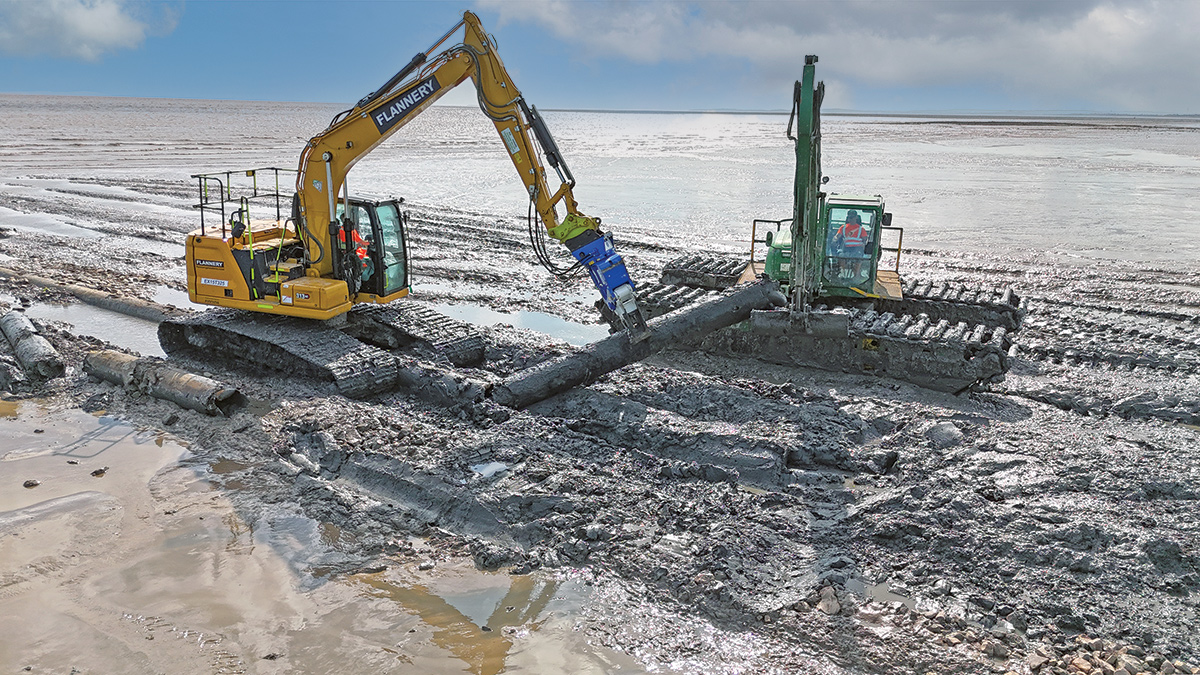
Old pipe being removed during low tide – Courtesy of Kaymac Marine & Civil Engineering Ltd
Conclusion
The long sea outfall replacement project stands as a model of responsible marine engineering within sensitive ecosystems.
By balancing complex engineering requirements with rigorous environmental protection, Kaymac Marine & Civil Engineering Ltd are proud to have played a key role in improving Newport’s existing infrastructure; blending innovative marine engineering techniques with stringent environmental safeguards to protect and enhance the unique ecology of the Severn Estuary.

Concrete mattresses being place over submerged pipe during night shift - Courtesy of Kaymac Marine & Civil Engineering Ltd
